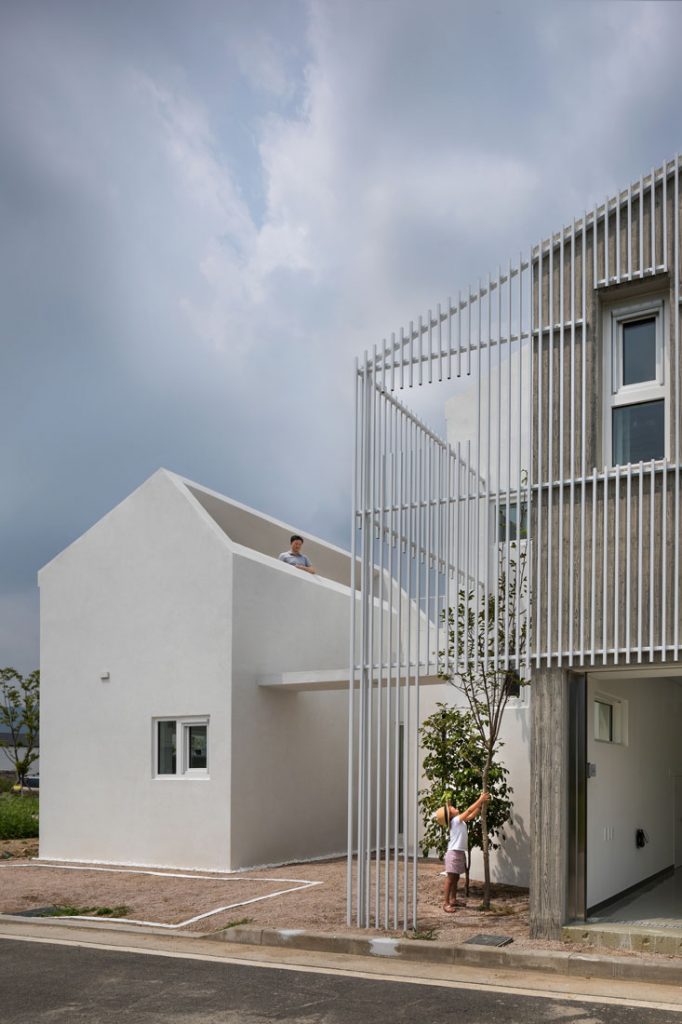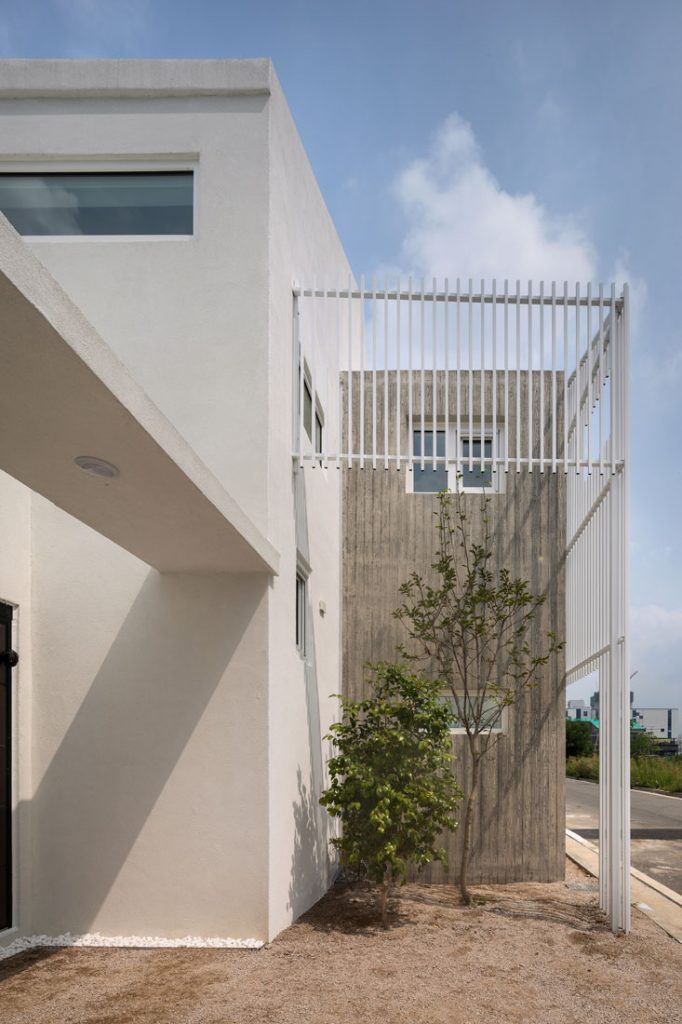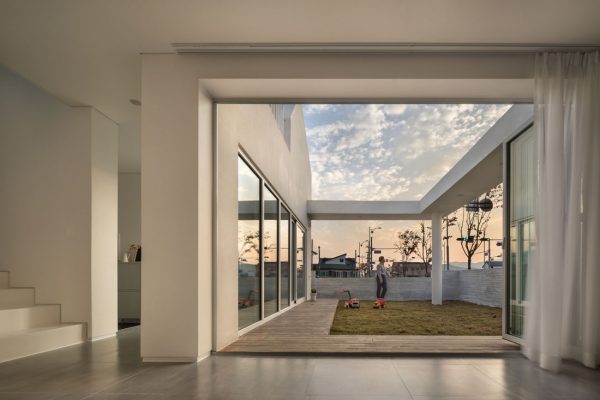A good home grows as we too, grow. Many think of this as an afterthought, and endeavour to extend and renovate their living format after-the-fact. But what if we designed our homes to evolve from the very beginning?

July 27th, 2018
For a young family, a home that moves and grows with you is critical. Your needs change, your children’s needs change, and your needs as a collective become less aligned, and increasingly disparate. The challenge however, is that with a fixed structure, change and evolution over time can be difficult, if not impossible… or so we thought.
Located in the rural city of Yansan in in South Korea’s Gyeongsangnam-do Province, local design studio Architects Group Raum were approached to produce a home for a young family with small children, that would ultimately mould and re-mould itself to the constantly changing needs of the growing family.
“Our brief was to create a home that would grow and change as the family grew and changed,” says lead architect Oh Sinwook of Architects Group Raum. “We created a response based on hyper-minimalism, which would allow what is ultimately a well-designed blank canvas to change into whatever the family needed at any given moment. We designed the home according to the existing circumstances of the residents, while also providing a basis for future growth.”

To begin with on the 164.66-square-metre property, Sinwook and team needed to define how the space could respond to changes in life. The concept of connected compartmentalisation become the driving philosophy, where spaces could be both separate/private, or opened up to be connected.
Rooms within the house are separated into zones and are not designated specific functions, but rather can perform different roles at different times. The living room for instance, is separate from residential space, and has been designed to function as a living room, a daycare room, a study, or even a guest room. Even the garage is multi-functional, where it not only houses the family’s cars, bikes, and son on, but also serves as an in-house workshop for metal and wood working, which opens up into the lower level of the home.

The second floor is the primary residential space featuring three decent sized bedrooms, which have been designed to change (expand and or separate) at any time based on the needs of the residents.
At the rear of the house, a low wall encloses a courtyard garden flanked by sliding and folding glass doors that connect it with the kitchen and dining area.
The garden space is further defined by a narrow roof structure. Supported by a pillar in one corner, it traces the boundary of the plot. “The yard is also an outdoor living room,” says Sinwook, “a children’s playing space, which is an extension of the interior life.”

Other significant design devices were not random, but deliberate inclusions in the architecture to communicate. The signature white gabled roof refers to youth in an attempt to differentiate it from the more traditional South Korean archetypes in the surrounding area, and white in particular was used to represent “infinite potential”.
A living, breathing piece of honest architecture for varying modes of living.
A searchable and comprehensive guide for specifying leading products and their suppliers
Keep up to date with the latest and greatest from our industry BFF's!

In the pursuit of an uplifting synergy between the inner world and the surrounding environment, internationally acclaimed Interior Architect and Designer Lorena Gaxiola transform the vibration of the auspicious number ‘8’ into mesmerising artistry alongside the Feltex design team, brought to you by GH Commercial.

Channelling the enchanting ambience of the Caffè Greco in Rome, Budapest’s historic Gerbeaud, and Grossi Florentino in Melbourne, Ross Didier’s new collection evokes the designer’s affinity for café experience, while delivering refined seating for contemporary hospitality interiors.

The Sub-Zero Wolf showrooms in Sydney and Melbourne provide a creative experience unlike any other. Now showcasing all-new product ranges, the showrooms present a unique perspective on the future of kitchens, homes and lifestyles.

Savage Design’s approach to understanding the relationship between design concepts and user experience, particularly with metalwork, transcends traditional boundaries, blending timeless craftsmanship with digital innovation to create enduring elegance in objects, furnishings, and door furniture.

DKO’s Interior Design Director on how to create community and specificity in interior design, and how apartment living is being reconceptualised.

Alice Blackwood visits Rivière by Aria Property and Bates Smart, pausing for an overnight stay, to explore the sustainability principles and design innovations underpinning Rivière’s unique lifestyle proposition.
The internet never sleeps! Here's the stuff you might have missed

Dallas Rogers, Head of Urban Discipline at the School of Architecture, Design and Planning, University of Sydney, comments on the history of map-making in our cities.

From the trailblazer of Spanish industrial design comes a new collection of recycled rugs – a powerful exploration of the concept of waste, a keen celebration of imperfection, and a new underfoot symbol of responsible design.